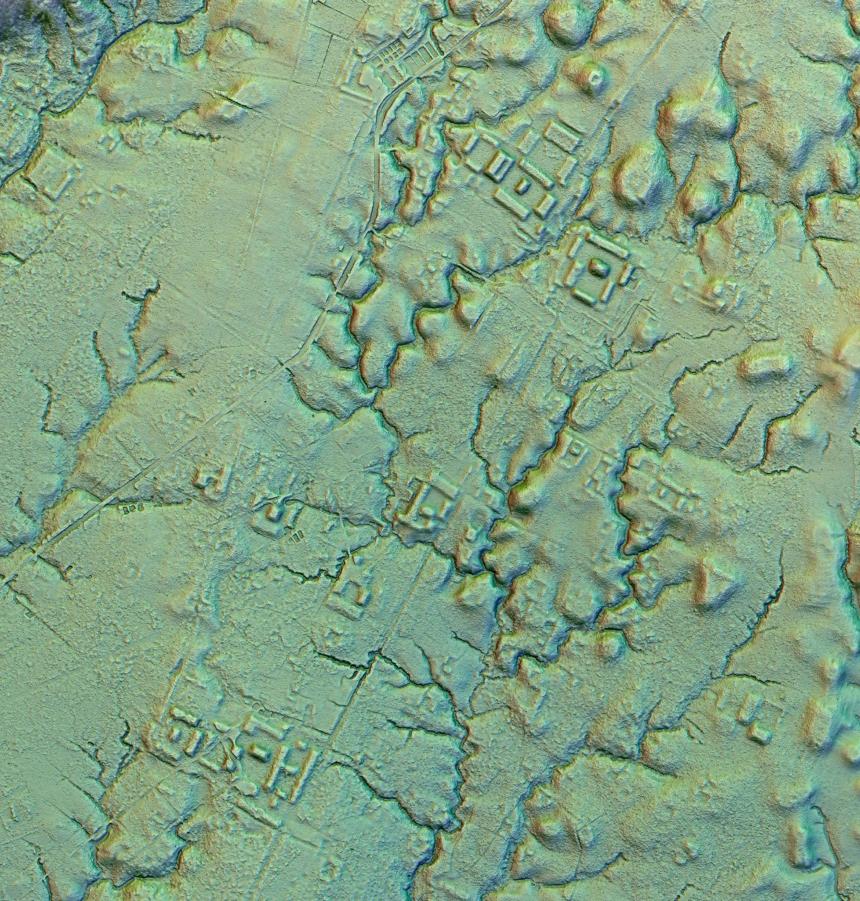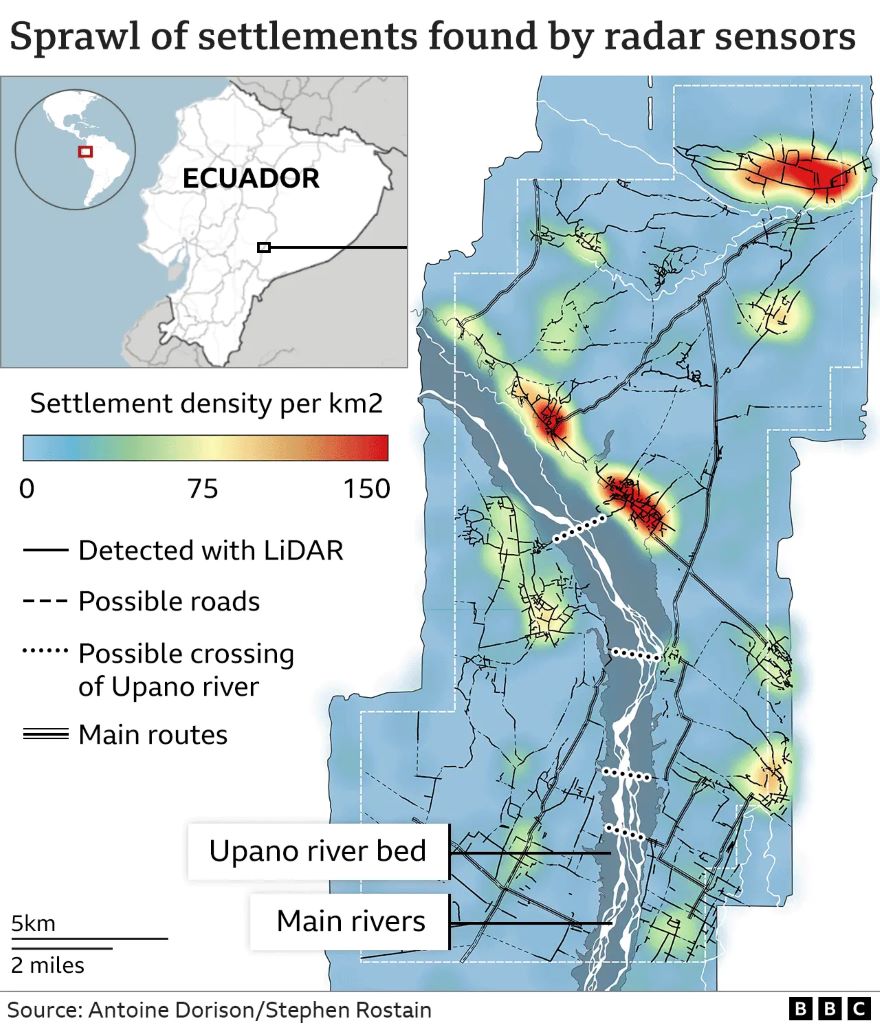Archaeologists discover network of cities, roadways deep in Amazon rainforest using laser technology
The Upano people was as advanced as the Maya and is the earliest and largest agricultural society recorded in South America's dense rainforest. It existed during the same time the Romans started expansion on the European continent.
For decades, researchers had studied the Upano Valley site in the Andes, but it wasn't until they utilized airborne lidar (light detection and ranging) that the true extent of the civilization became apparent.
Lidar involves sending thousands of infrared laser pulses to reflect off the landscape, revealing structures hidden beneath the vegetation.
According to a study published in the journal Science, the technology revealed more than 6,000 rectangular earthen platforms, plaza structures, and mounds interconnected by an extensive grid of straight roadways and footpaths.
More to read:
Archaeologists discover ancient Maya city in Mexican jungle
Lead author Stéphen Rostain, an archaeologist at the French National Center for Scientific Research, emphasized in a statement that while previous explorations were hindered by dense vegetation, Lidar provided a clear view of the land.
The site spans approximately 230 square miles (600 square kilometers) and was occupied from roughly 500 B.C. to between A.D. 300 and 600 by the Kilamope and Upano cultures, with some later reoccupation by the Huapula culture.

Lidar images also revealed nearly 15 distinct settlement sites of varying sizes and structures, including massive mounds up to 492 feet (150 meters) long and 26 feet (8 meters) high. The road network, extending over vast distances with sophisticated straight paths and canals for water management, suggests a highly organized society that numbered tens of thousands of people.
The discovery challenges previous notions that Amazonian inhabitants lived only in small, nomadic groups. Instead, it shows they developed complex urban societies.
More to read:
Human ancestors were almost extinct 900,000 years ago
Co-author Antoine Dorison noted the impressive engineering of the road network, highlighting its ceremonial or significant meaning in addition to practical uses. Researchers also found evidence of threats to the cities, such as ditches blocking entrances.
The civilization's size and complexity rival those of the Maya, yet with distinct architectural and cultural characteristics. Despite some knowledge gaps about the society, pits, hearths, jars, grinding stones, and burnt seeds indicate a focus on agriculture, including maize and sweet potato cultivation, and possibly the brewing of "chicha," a type of sweet beer whose recipe has survived our days.

The Upano civilization vanished before the arrival of Europeans in the Americas. One possible answer is the volcanic activity in the area, judging by the multiple layers of volcanic dust and aches.
The next research phase involves exploring an adjoining 300 square kilometer area not yet surveyed. This discovery underscores the need to revise modern understanding of Amazonian heritage, recognizing the diversity and complexity of humanity.
***
NewsCafe relies in its reporting on research papers that need to be cracked down to average understanding. Some even need to be paid for. Help us pay for science reports to get more interesting stories. Use PayPal: office[at]rudeana.com or paypal.me/newscafeeu.







![[video] Pakistan has plans for a strategic Bitcoin reserve](/news_img/2025/07/03/news1_mediu.jpg)